Elbow Joint Stiffness
Table of Contents
Definition
Elbow joint stiffness refers to a condition characterized by a reduced range of motion or limited movement in the elbow joint. Usually, the elbow joint allows for bending (flexion) and straightening (extension) of the arm, as well as some rotation of the forearm. However, in cases of stiffness, these movements become restricted, making it difficult or uncomfortable to perform daily activities that involve the use of the elbow.
Elbow joint stiffness can be caused by various factors, including injuries, overuse, arthritis, inflammation, nerve compression, and certain medical conditions. The severity of the stiffness can range from mild discomfort to significant limitation of movement, depending on the underlying cause.
Causes of Elbow Joint Stiffness
Elbow joint stiffness refers to a condition where there is a limited range of motion in the elbow joint, resulting in difficulty or discomfort when moving the arm. This stiffness can be caused by various factors, including injury, inflammation, overuse, or certain medical conditions. Let’s explore some common causes of elbow joint stiffness
Injury: A direct blow to the elbow, a fall on an outstretched arm, or a sports-related injury can lead to damage in the joint structures, such as ligaments, tendons, or bones, causing stiffness.
Arthritis: Different forms of arthritis, such as osteoarthritis or rheumatoid arthritis, can cause inflammation and damage to the joint, leading to stiffness, pain, and reduced mobility.
Tennis Elbow (Lateral Epicondylitis): This condition involves inflammation of the tendons on the outside of the elbow, leading to stiffness and pain during gripping and wrist movements.
Golfer’s Elbow (Medial Epicondylitis): Similar to tennis elbow, this condition affects the tendons on the inner side of the elbow, causing stiffness and discomfort during wrist flexion and gripping.
Bursitis: Inflammation of the bursa sac, which acts as a cushion between bones and soft tissues, can result in elbow stiffness and pain.
Cubital Tunnel Syndrome: Compression or irritation of the ulnar nerve around the elbow can cause stiffness, tingling, and weakness in the forearm and hand.
Overuse: Repetitive motions involving the elbow joint, such as in certain sports or occupations, can lead to overuse injuries and subsequent stiffness.
Fractures and Dislocations: A broken bone or a dislocated joint in the elbow area can cause stiffness as the body tries to protect and heal the injured site.
Infections: In rare cases, infections in or around the elbow joint can lead to stiffness and limited range of motion.
Symptoms of Elbow Joint Stiffness
- Limited range of motion: Difficulty fully extending or flexing the elbow joint. You may find it challenging to straighten or bend your arm completely.
- Pain: Experiencing discomfort or pain when moving the elbow joint or applying pressure to it.
- Swelling: The affected area may become swollen, which can contribute to the feeling of stiffness and restrict movement.
- Tenderness: The elbow joint might feel tender to the touch, especially in the areas surrounding the joint.
- Warmth and redness: Inflammation can cause the skin around the elbow to become warm, red, or even slightly inflamed.
- Weakness: Elbow joint stiffness can lead to a sense of weakness in the affected arm, making it difficult to perform certain tasks or lift objects.
- Crepitus: A sensation of crackling or grinding in the joint when moving the elbow, which can be caused by irregularities in the joint surfaces.
- Locking or catching sensation: You might feel as if the joint gets “stuck” or catches during movement.
- Morning stiffness: Elbow stiffness can be more pronounced in the morning or after a period of inactivity.
Diagnosis
Diagnosing the cause of elbow joint stiffness typically involves a comprehensive evaluation by a healthcare professional, such as an orthopedic doctor or a rheumatologist. The diagnosis process might include the following steps:
Medical history: The doctor will begin by asking you about your symptoms, any previous injuries or medical conditions, and your overall health history. Providing accurate and detailed information will help the doctor narrow down potential causes.
Physical examination: The healthcare professional will examine your elbow joint and surrounding areas, checking for signs of inflammation, swelling, tenderness, and range of motion limitations. They may also assess your arm strength and look for any visible deformities.
Imaging tests: X-rays can help identify fractures, dislocations, arthritis, or other structural abnormalities in the elbow joint. Magnetic Resonance Imaging (MRI) or ultrasound may be ordered to get more detailed images of soft tissues, such as ligaments, tendons, and cartilage.
Blood tests: In some cases, blood tests may be necessary to assess markers of inflammation or to check for specific conditions like rheumatoid arthritis or gout.
Aspiration and analysis of joint fluid: If there is significant joint swelling, the doctor may perform a joint aspiration to collect fluid from the affected joint. Analyzing this fluid can help determine if there is an infection or an inflammatory condition.
Nerve conduction studies (if applicable): If nerve-related issues are suspected, nerve conduction studies may be conducted to evaluate the function of the nerves around the elbow joint.
Differential Diagnosis
Elbow Arthritis: Different types of arthritis can affect the elbow joint, such as osteoarthritis, rheumatoid arthritis, or psoriatic arthritis. Each type has distinct features and may require specific treatment approaches.
Tennis Elbow (Lateral Epicondylitis): This condition involves inflammation of the tendons on the outside of the elbow, often due to overuse or repetitive motions. It can cause pain, weakness, and stiffness in the joint.
Golfer’s Elbow (Medial Epicondylitis): Similar to tennis elbow, but affecting the tendons on the inside of the elbow. It could also lead to stiffness and a limited range of motion.
Elbow Bursitis: Inflammation of the bursa (fluid-filled sac) located around the elbow joint, leading to swelling and stiffness.
Elbow Fracture or Dislocation: A fracture or dislocation of the bones in the elbow joint can cause significant pain, and swelling, and restrict movement.
Ligament or Tendon Injury: Injuries to the ligaments or tendons around the elbow joint, such as a tear or strain, can result in stiffness and reduced mobility.
Cubital Tunnel Syndrome: Compression or irritation of the ulnar nerve, as it passes through the cubital tunnel (located on the inside of the elbow), can lead to symptoms like stiffness, weakness, and tingling in the hand and forearms.
Radial Tunnel Syndrome: Compression of the radial nerve near the elbow can cause symptoms similar to cubital tunnel syndrome, including elbow stiffness.
Olecranon Bursitis: Inflammation of the bursa located at the back of the elbow, causing pain, swelling, and stiffness.
Infections: Bacterial or viral infections in or around the elbow joint can lead to inflammation, swelling, and limited range of motion.
Systemic Diseases: Conditions like systemic lupus erythematosus (SLE) or gout can cause joint stiffness and inflammation in multiple joints, including the elbow.
Tumors or Bone Spurs: Abnormal growths or bone spurs around the elbow joint can restrict movement and cause discomfort.
Medical Treatment of Elbow Joint Stiffness
Pain and Anti-inflammatory Medications: Nonsteroidal anti-inflammatory drugs (NSAIDs) can help reduce pain and inflammation in the elbow joint. They are often used for conditions like arthritis, tendinitis, or bursitis.
Corticosteroid Injections: In some cases, the healthcare professional may administer corticosteroid injections directly into the affected joint to reduce inflammation and relieve symptoms.
Physical Therapy: A physical therapist can design a customized exercise program to improve the range of motion, strength, and flexibility of the elbow joint. They may also use modalities like heat, ice, or ultrasound to help alleviate stiffness and promote healing.
Immobilization: Immobilizing the elbow with a splint or brace for a short period can sometimes help alleviate stress on the joint and promote healing, particularly after an injury.
Joint Aspiration: If there is significant swelling in the elbow joint, the doctor may perform a common aspiration to remove excess fluid, which can help relieve pressure and reduce stiffness.
Disease-Modifying Antirheumatic Drugs (DMARDs): If the elbow joint stiffness is due to rheumatoid arthritis or other autoimmune conditions, DMARDs may be prescribed to slow down the progression of the disease and reduce inflammation.
Biologic Therapies: For certain inflammatory conditions, biologic drugs that target specific molecules involved in the immune response may be used to control symptoms and improve joint function.
Surgery: In cases where conservative treatments are infectious, surgical intervention might be mandatory. Surgery can involve removing bone spurs, repairing ligaments or tendons, or joint replacement for severe arthritis.
Nerve Treatment: If the stiffness is related to nerve compression or entrapment, nerve-specific treatments like corticosteroid injections or surgical decompression may be considered.
Treatment of Underlying Conditions: If elbow stiffness is a symptom of an underlying medical condition (e.g., gout, lupus), treating the primary disease may help alleviate symptoms.
Physiotherapy Treatment
Manual Therapy: The physiotherapist may use hands-on techniques such as joint mobilizations, soft tissue massage, and stretching to help improve elbow joint mobility and reduce stiffness.
Range of Motion Exercises: Gentle and controlled exercises are prescribed to improve the content of motion in the elbow joint. These exercises assess prevent further stiffness and promote flexibility.
Strengthening Exercises: Strengthening the muscles around the elbow joint can help stabilize and support the joint, reducing the risk of further stiffness and improving overall joint function.
Ultrasound Therapy: Therapeutic ultrasound uses sound waves to generate heat deep within the tissues, promoting blood flow and aiding in the healing process.
Electrical Stimulation: Electrical stimulation techniques, such as Transcutaneous Electrical Nerve Stimulation (TENS), can help reduce pain and muscle tension around the elbow joint.
Heat and Ice Therapy: Applying heat or ice to the affected area can help reduce inflammation and alleviate stiffness. Heat therapy is typically used before exercise to warm up the muscles, while ice therapy can be applied after exercise to reduce swelling.
Taping and Bracing: Taping or bracing the elbow joint can provide support and stability, reducing strain on the joint during movement.
Neuromuscular Reeducation: This technique helps retrain the muscles and nerves around the elbow joint to improve coordination and movement patterns.
Home Exercise Program: The physiotherapist will likely prescribe specific exercises for the individual to perform at home regularly. Regular exercise is essential for maintaining and improving joint flexibility and strength.
Activity Modification and Ergonomic Advice: The physiotherapist may guide modifying daily activities and work ergonomics to reduce stress on the elbow joint and prevent further stiffness.
Gradual Return to Activities: For individuals recovering from injuries or overuse, the physiotherapist will guide them through a gradual return to sports, work, or daily activities to prevent re-injury.
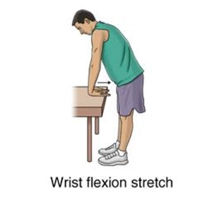
Exercise Therapy
Wrist Flexor Stretch:
Extend the patient’s affected arm straight in front of you with the patient’s palm facing up.
Use your other hand to gently bend your wrist, pointing your fingers toward the floor.
Hold the stretch for fifteen to thirteen seconds and repeat 2 to 3 times on both sides.
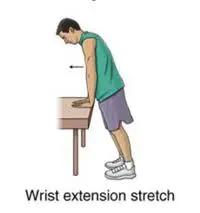
Wrist Extensor Stretch:
Extend the patient’s affected arm straight in front of the patient with your palm facing the downside.
Use your other hand to gently bend your wrist, pointing your fingers toward the ceiling.
Hold the stretch for fifteen to thirteen seconds and repeat 2 to 3 times on both sides.
Forearm Pronation and Supination:
Sit in a chair with your affected forearm resting on your thigh or a table, palm facing down.
Rotate your forearm, so your palm faces up (supination), and then rotate it back to the starting position (pronation).
Perform 10-15 repetitions in each direction and do 2-3 sets.
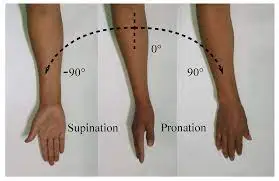
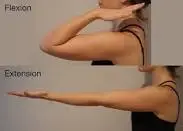
Elbow Flexion and Extension:
Sit or stand with your arms at your sides and elbows bent at 90 degrees.
Slowly straighten your arm, extending your elbow.
Slowly bend the patient’s arm back to the starting position.
Perform 10-15 repetitions and do 2-3 sets.
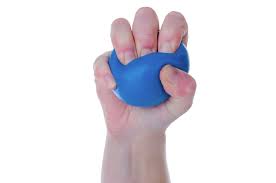
Ball Squeeze:
Hold a soft ball or stress ball in the patient’s affected hand.
Squeeze the ball as hard as a person can without causing pain.
Hold the ball squeeze position for five seconds and then release.
Perform 10-15 repetitions and do 2-3 sets.
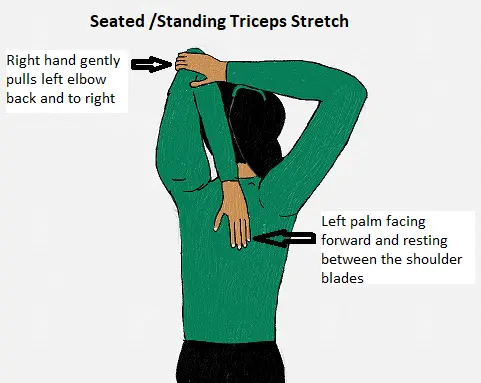
Triceps Stretch:
Raise your affected arm overhead.
Bend the patient’s elbow, reaching the patient’s hand down the patient’s back.
Use your other hand to gently press on the bent elbow, increasing the stretch.
Hold the stretch for fifteen to thirteen seconds and repeat 2 to 3 times on both sides.
Dumbbell:
Pronation and supination with dumbells. Sit on a chair or bench with your forearm resting on your thigh or a flat surface, palm facing up.
Hold a light dumbbell or a small weight in the patient’s hand.
Rotate your forearm, so your palm faces down (pronation), and then rotate it back to the starting position (supination).
Perform 10-15 repetitions in each direction and do 2-3 sets.
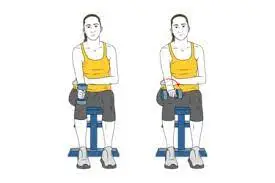

Towel Twist:
Take a small towel or resistance band and hold it with both hands.
Start with your hands close together and the towel/band taut.
Slowly twist the towel/band by moving your hands in opposite directions, stretching it out.
Then, slowly twist it back to the starting position.
Perform 10-15 repetitions and do 2-3 sets.
Wrist Curls:
Sit on a chair or stand with the patient’s forearm resting on a table or the patient’s thigh, palm facing upside down.
Hold a light dumbbell or a weighted object in the patient’s hand.
Lift the weight by bending your wrist upward, then gradually bring it back down.
Perform 10-15 repetitions and do 2-3 sets.
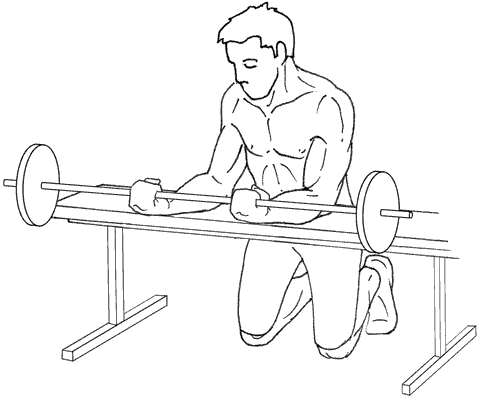
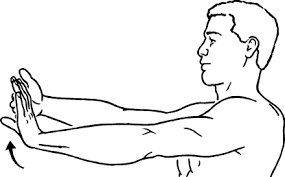
Elbow Flexor Stretch:
Stand or sit with your back straight.
Straighten out the affected arm in front of you, palm outward and away from the body.
Use your other hand to gently pull your fingers and hand back towards your body, feeling a stretch in your forearm.
Hold the stretch for fifteen to thirteen seconds and repeat 2 to 3 times on both sides.
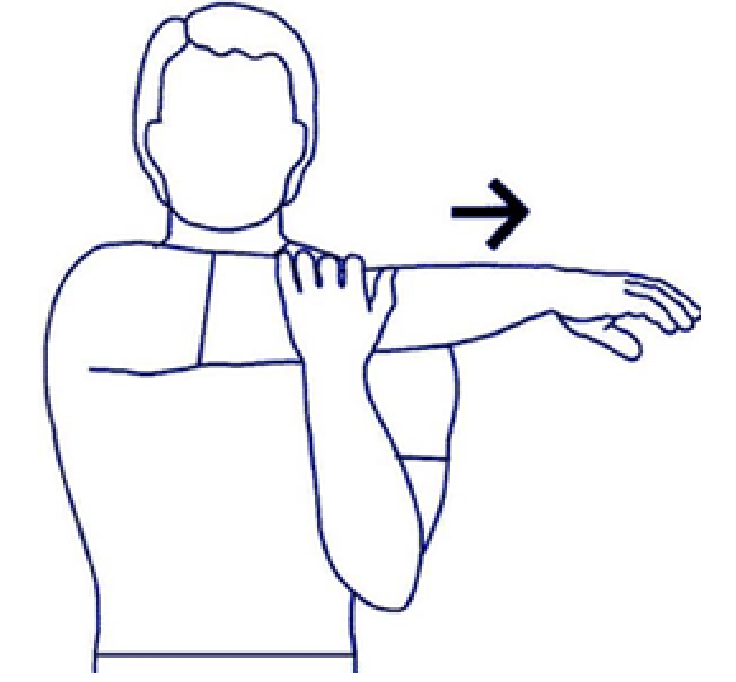
Elbow Extension Stretch:
Stand or sit with your back straight.
Place your affected arm across your chest with the elbow bent.
Use the patient’s other hand to gently press on the back of the patient’s forearm, extending your elbow.
Hold the stretch for fifteen to thirteen seconds and repeat 2 to 3 times on both sides.
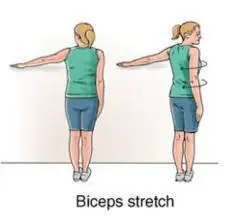
Bicep Stretch:
Stand or sit with your back straight.
Place the patient’s affected arm straight out in front of you with your palm facing up position.
Use your other hand to gently pull your fingers and hand back towards your body until you feel a stretch in your bicep.
Hold the biceps stretch for 10-20 seconds and repeat 2 or 3 times on both sides.
Surgical Treatment
Surgical treatment for elbow joint stiffness is considered when conservative approaches, such as medication and physiotherapy, fail to provide relief or when the underlying cause of the stiffness requires surgical intervention. The specific surgical procedure will depend on the cause and severity of the elbow joint stiffness. Here are some common surgical treatments for elbow joint stiffness:
Arthroscopic Debridement: In cases of loose bodies, damaged cartilage, or inflamed synovial tissue causing stiffness, arthroscopic surgery may be performed. This minimally invasive procedure involves using a small camera (arthroscope) and specialized instruments to remove debris and repair damaged tissues within the joint.
Elbow Release Surgery (Capsulotomy): If the elbow joint is stiff due to a thickened or contracted joint capsule, a surgeon may perform a capsulotomy to release the tightness. This procedure involves surgically cutting and stretching the joint capsule to improve elbow mobility.
Elbow Osteotomy: This procedure involves cutting and realigning the bones around the elbow joint to correct deformities and improve joint function. It can be used to treat conditions like arthritis, malunion fractures, or bone abnormalities causing stiffness.
Elbow Arthroplasty: In severe cases of arthritis or joint damage, elbow arthroplasty (joint replacement) may be considered. During this surgery, the damaged parts of the elbow joint are replaced with artificial components made of metal and plastic, restoring joint function and reducing stiffness.
Ligament or Tendon Repair/Reconstruction: If the elbow stiffness is due to ligament or tendon injuries, surgical repair or reconstruction may be necessary to restore joint stability and range of motion.
Ulnar Nerve Transposition: In cases where ulnar nerve compression (cubital tunnel syndrome) is causing stiffness, the nerve may be surgically repositioned to alleviate pressure and improve nerve function.
Radial Head Excision: In some cases of severe radial head fractures that lead to chronic stiffness and pain, surgical removal of the radial head (radial head excision) may be considered.
FAQ
How much time does it take for elbow stiffness to go away?
The elbow may occasionally be splinted back to a useful range of motion if it gets stiff. This is most effective in the first 6 months following injury or surgery. Typically this involves soft tissue stiffness only and would not overcome joint deformity.
What happens in elbow stiffness?
Stiffness of the elbow is defined as flexion <120° and loss of extension >30°. The stiffness of the elbow causes difficulty in the placement of the hand in space and hence decreases the functional capacity. Mechanical blocks to motion either from bone result or soft tissue in elbow stiffness in the joint.
How much time does joint stiffness last?
The average episode lasts only about ten to fifteen minutes. The stiffness decreases as you move and warm up the elbow joints and elbow muscles. However, stiffness from rheumatoid arthritis might last more than an hour.
What is severe elbow stiffness?
A stiff elbow joint, also known as elbow contracture, is diagnosed when the elbow’s range of motion is decreased, often due to a joint injury or medical condition such as arthritis or bursitis. Elbow stiffness limits the ability to rotate the elbow joint, pick up objects, and bend and straighten the elbow joint.
What affects the stability of the elbow joint?
Instability or stability of the elbow joint is contingent upon three distinct but interrelated conditions: radiocapitellar articular continuity, coronoid flow integrity, and medial collateral ligament competency through an intact anterior oblique ligament.


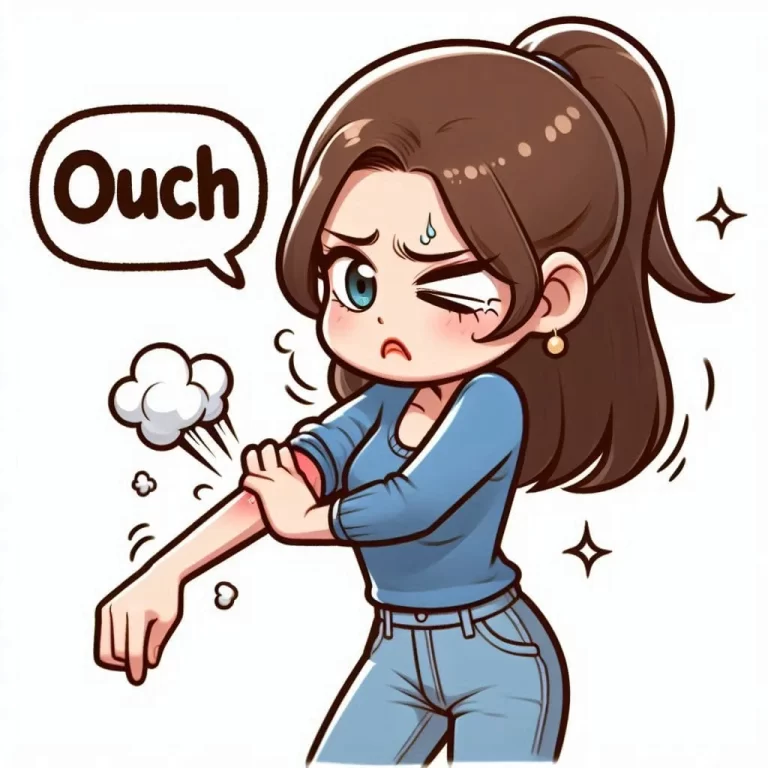
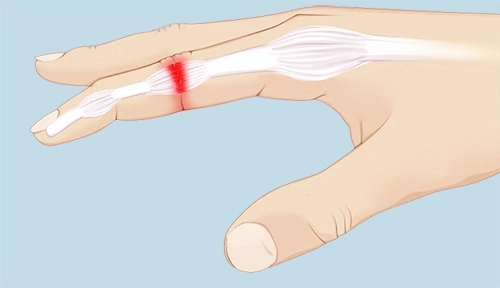
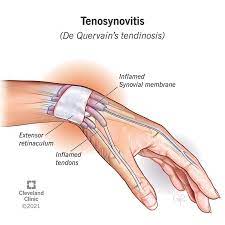
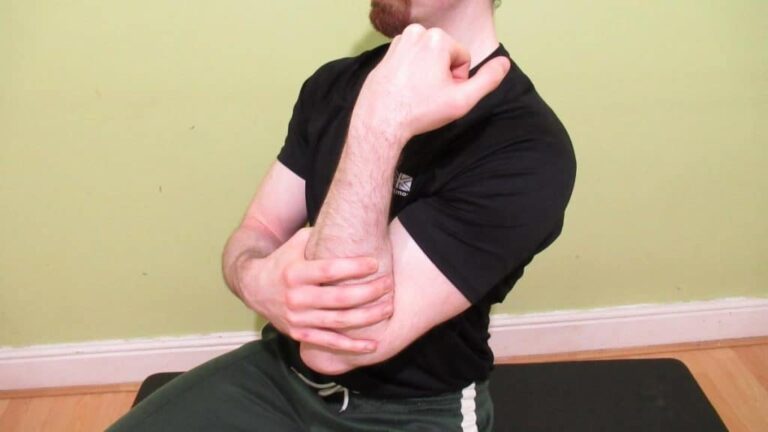
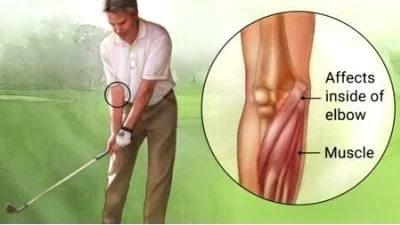
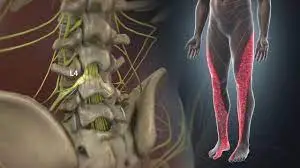
2 Comments